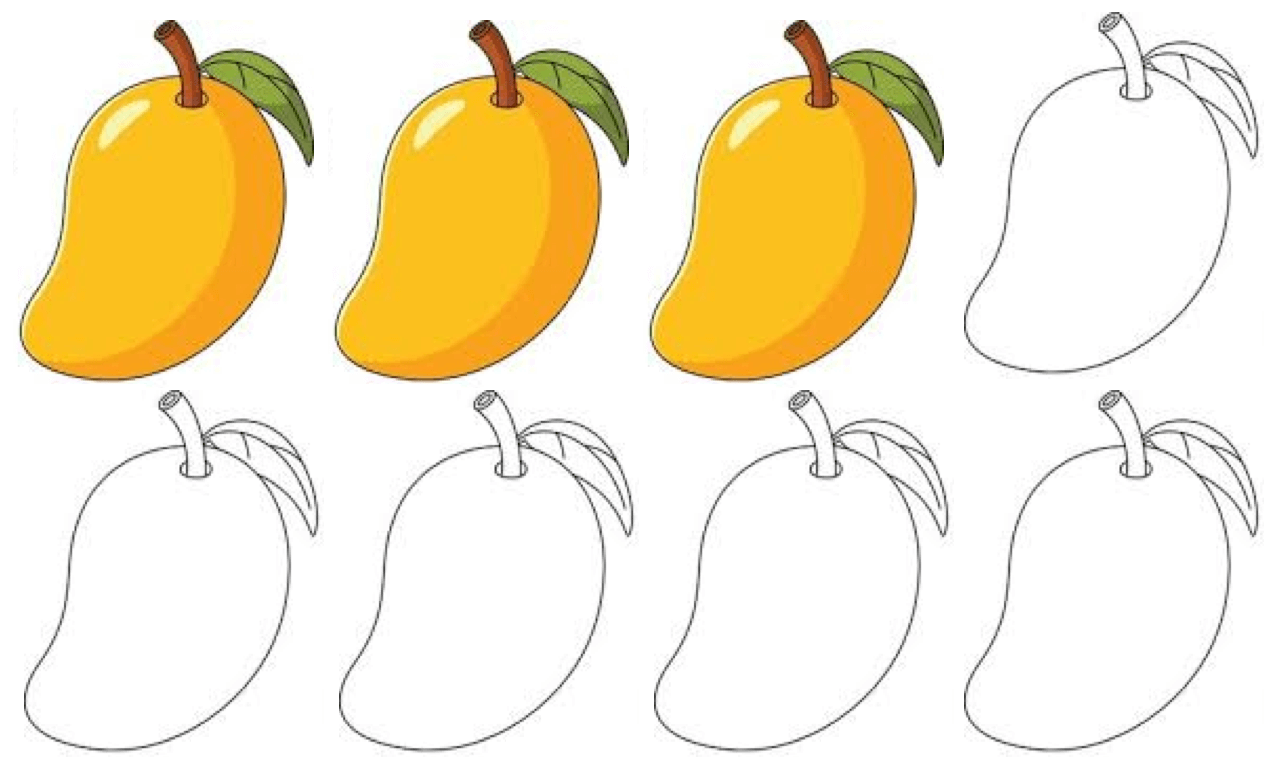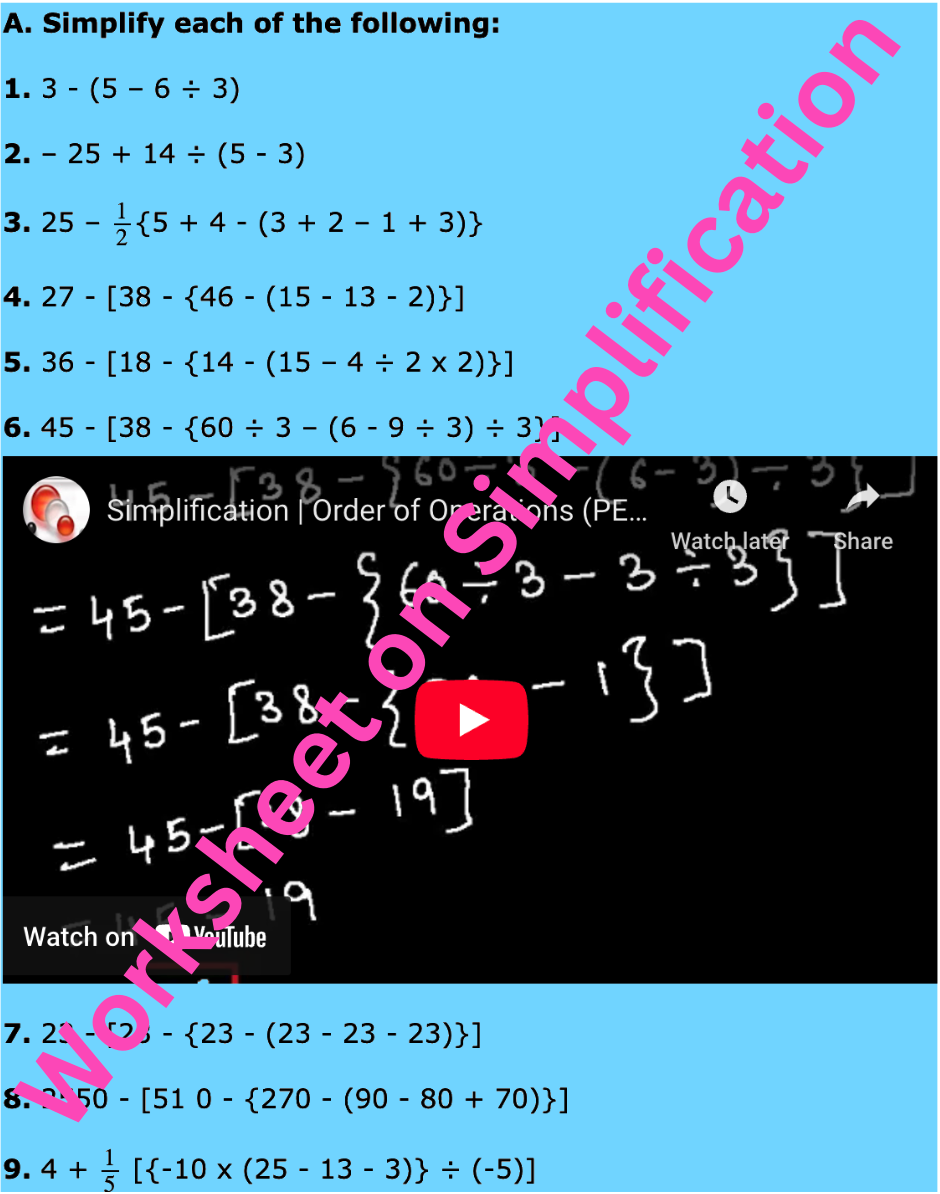Numerator and Denominator of a Fraction
What are the numerator and denominator of a fraction?
We have already learnt that a fraction is written with two numbers arranged one over the other and separated by a line. The number under the line shows in how many equal parts the whole has been divided into. It is called denominator of the fraction. The number above the line shows how many parts of the whole have been taken. It is called numerator of the fraction. So in 23, 2 is the numerator and 3 is the denominator.
Numerator and Denominator of a Fraction:
We can see that a fraction has two parts.
The number above the division line and the number below the division line. The number below the division line tells us into how many equal parts single or collection of object has been divided. We call it the Denominator. The number above the division line tells us how many of these equal parts have been taken from the whole. We call it the Numerator.
Read as 2 over 5 or two by five.
Fraction mean part of a region or part of a collection.
Worksheet on Numerator and Denominator of a Fraction:
Questions on Numerator and Denominator of a Fraction:
I. Write the denominators and numerators-
|
Fraction |
Numerator |
Denominator | |
|
(i) |
58 |
_____ |
_____ |
|
(ii) |
14 |
_____ |
_____ |
|
(iii) |
62 |
_____ |
_____ |
|
(iv) |
27 |
_____ |
_____ |
|
(v) |
46 |
_____ |
_____ |
|
(vi) |
23 |
_____ |
_____ |
Answer:
I. (i) Numerator = 5 and Denominator 8
(ii) Numerator = 1 and Denominator 4
(iii) Numerator = 6 and Denominator 2
(iv) Numerator = 2 and Denominator 7
(v) Numerator = 4 and Denominator 6
(vi) Numerator = 2 and Denominator 3
II. Write the fractions-
|
Fraction |
Numerator |
Denominator | |
|
(i) |
_____ |
2 |
3 |
|
(ii) |
_____ |
8 |
9 |
|
(iii) |
_____ |
5 |
8 |
|
(iv) |
_____ |
1 |
6 |
|
(v) |
_____ |
7 |
15 |
|
(vi) |
_____ |
6 |
11 |
Answer:
II. (i) 23
(ii) 89
(iii) 58
(iv) 16
(v) 715
(vi) 611
III. Fill in the table -
|
Figure |
(i) |
(ii) |
(iii) |
(iv) |
(v) |
|
Shaded parts (Numerator) |
___ |
___ |
___ |
___ |
___ |
|
Number of parts (Denominator) |
___ |
___ |
___ |
___ |
___ |
|
Fraction of shaded parts |
___ |
___ |
___ |
___ |
___ |
Answer:
III. (i) Shaded parts (Numerator) = 1
Number of parts (Denominator) = 3
Fraction of shaded parts = 13
(ii) Shaded parts (Numerator) = 6
Number of parts (Denominator) = 8
Fraction of shaded parts = 68
(iii) Shaded parts (Numerator) = 4
Number of parts (Denominator) = 6
Fraction of shaded parts = 46
(iv) Shaded parts (Numerator) = 3
Number of parts (Denominator) = 4
Fraction of shaded parts = 34
(v) Shaded parts (Numerator) = 8
Number of parts (Denominator) = 16
Fraction of shaded parts = 816
IV. Fill in the blanks _
(i) In 102 the numerator is _____ and the denominator is _____.
(ii) In 93 the denominator is _____ .
(iii) In 102 the numerator is _____ .
Answer:
IV. (i) 10; 2
(ii) 3
(iii) 10
V. How many fractions have the numerator '6'?
62, 162, 35, 93, 61
Answer:
V. 2 fractions
VI. Write in fraction form -
|
(i) Numerator 30 and Denominator 5 |
.... ____ .... |
|
(ii) Numerator 9 and Denominator 54 |
.... ____ .... |
|
(iii) Numerator 15 and Denominator 30 |
.... ____ .... |
Answer:
VII. (i) 305
(ii) 954
(iii) 1530
VII. Write the fraction with:
|
(i) Numerator 2, Denominator 5 (ii) Numerator 4, Denominator 10 (iii) Numerator 3, Denominator 7 (iv) Numerator 1, Denominator 6 (v) Numerator 4, Denominator 8 |
_____ _____ _____ _____ _____ |
Answer:
VIII. (i) 25
(ii) 410
(iii) 37
(iv) 16
(v) 48
The number above the line is called the 'numerator' of the fraction and the number below the line is called the 'denominator' of the fraction.
For example, in fraction 712, 7 is the numerator and 12 is the denominator.
Also, in fraction 38, 3 is the numerator 8 is the denominator.
Fractional Numbers
From Numerator and Denominator to HOME PAGE
Didn't find what you were looking for? Or want to know more information about Math Only Math. Use this Google Search to find what you need.
Recent Articles
-
Counting Numbers from 1 to 50 | Match the Number | Missing Numbers
Apr 04, 25 03:46 PM
In counting numbers from 1 to 50, recognize the numbers, count and then join the numbers in the correct number order. Here we mainly need eye-hand coordination to draw the picture and maintain the num -
Counting Eleven to Twenty with Numbers and Words |Numbers from 11 - 20
Apr 04, 25 03:21 PM
Counting eleven to twenty with numbers and words are explained below. One ten and one more is eleven. Eleven comes after ten. One ten and two more is twelve. Twelve comes after eleven. -
5th Grade BODMAS Rule Worksheet | PEMDAS | Order of operations|Answers
Apr 03, 25 03:11 PM
In 5th Grade BODMAS Rule Worksheet you will get different types of problems on mathematical expressions involving different operations, mathematical expression with 'brackets' and 'of' and simplifying… -
Worksheet on Simplification | Simplify Expressions | BODMAS Questions
Apr 03, 25 02:58 PM
In worksheet on simplification, the questions are based in order to simplify expressions involving more than one bracket by using the steps of removal of brackets. This exercise sheet -
Divisible by 2 Video |Test of Divisibility by 2 Trick| Rules| Examples
Apr 03, 25 10:25 AM
A number is divisible by 2 if the digit at unit place is either 0 or multiple of 2. So a number is divisible by 2 if digit at its units place is 0, 2, 4, 6 or 8.









New! Comments
Have your say about what you just read! Leave me a comment in the box below. Ask a Question or Answer a Question.